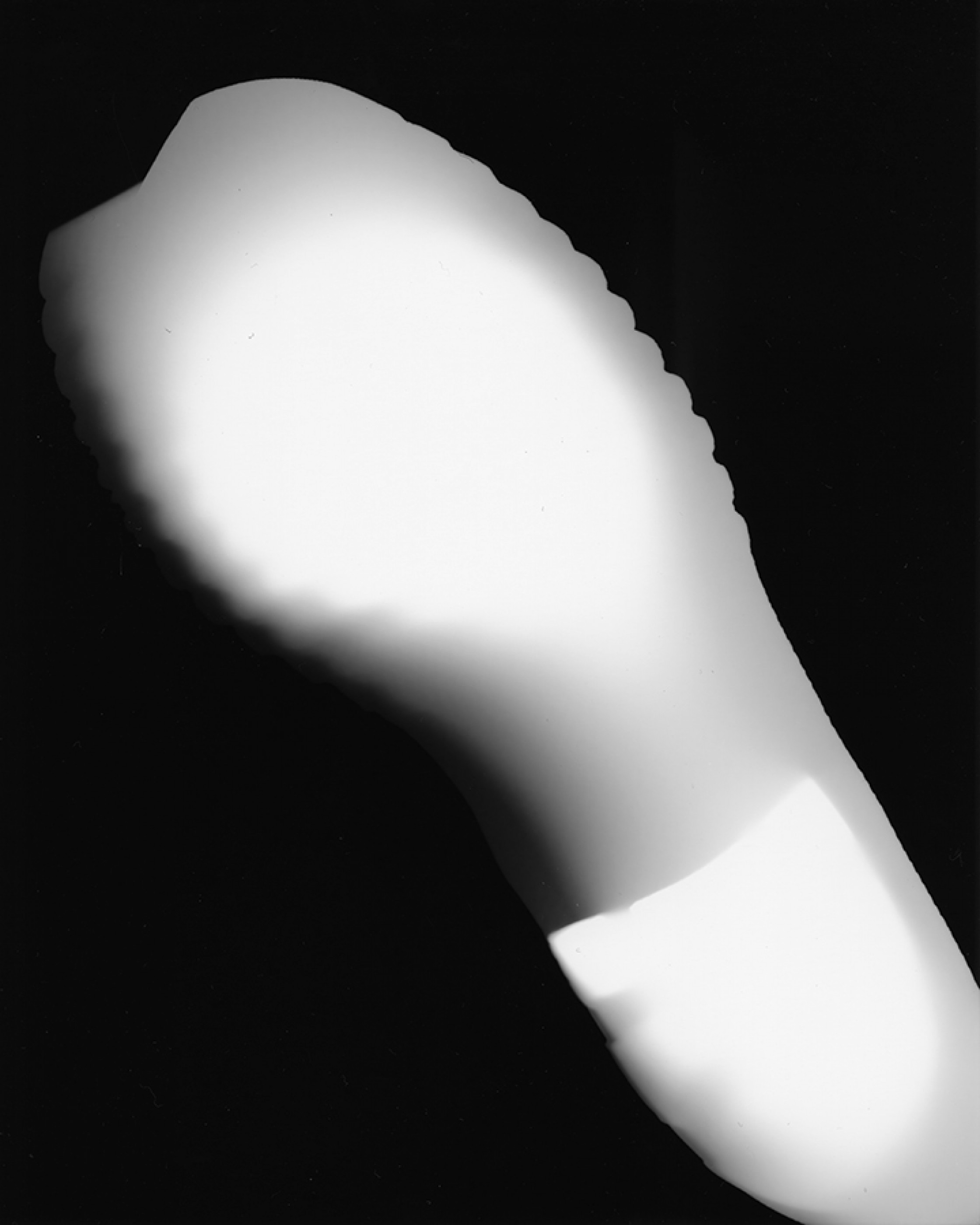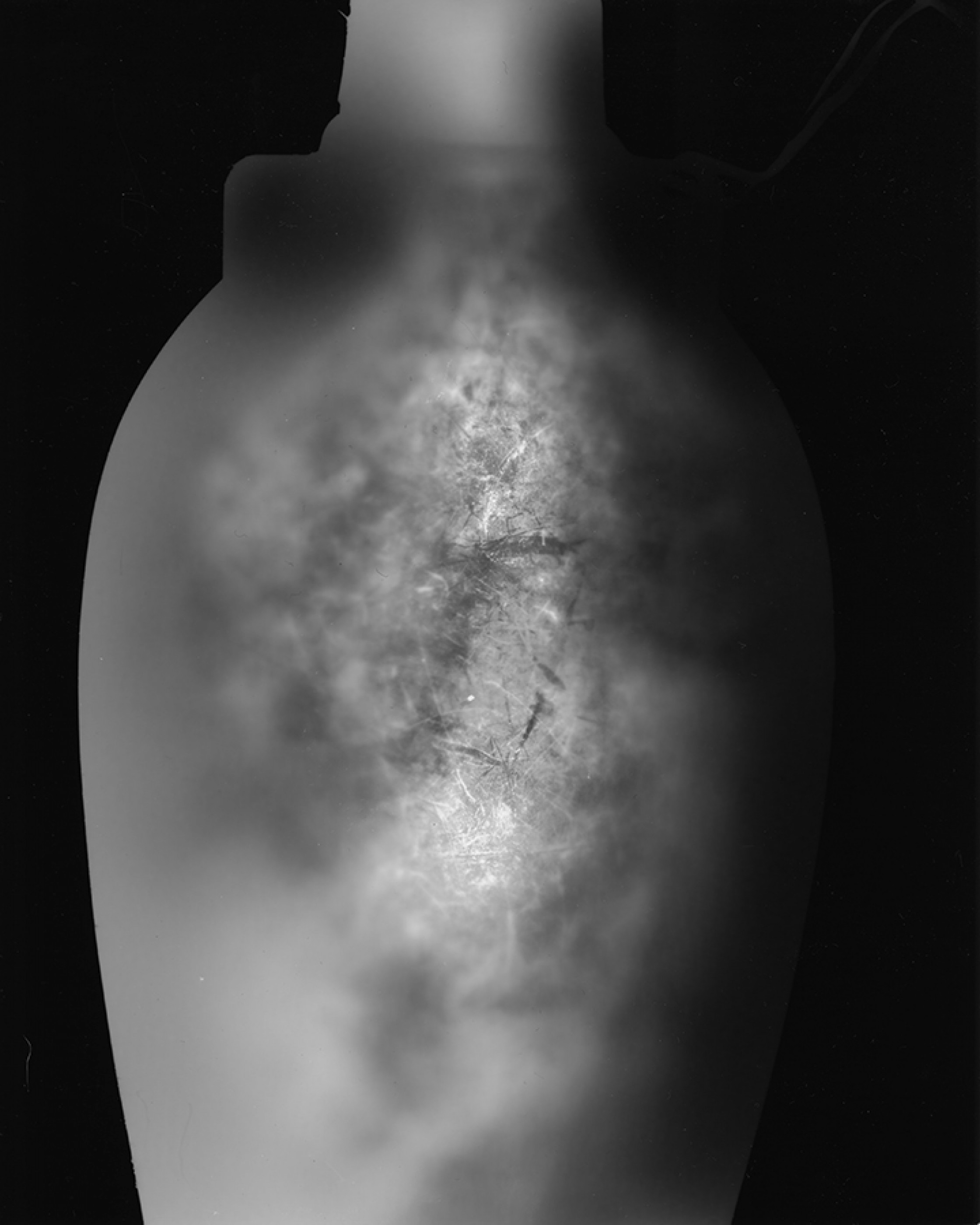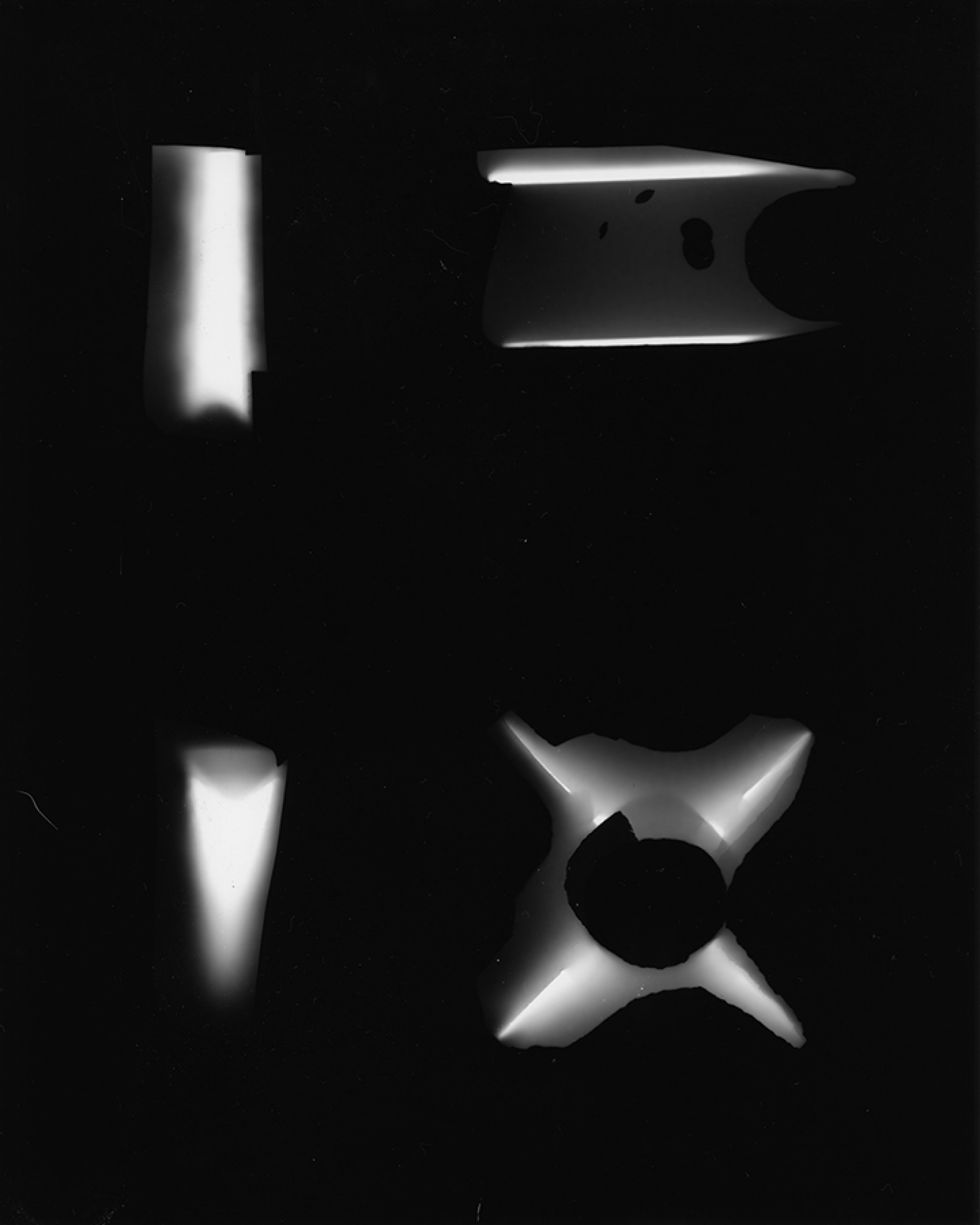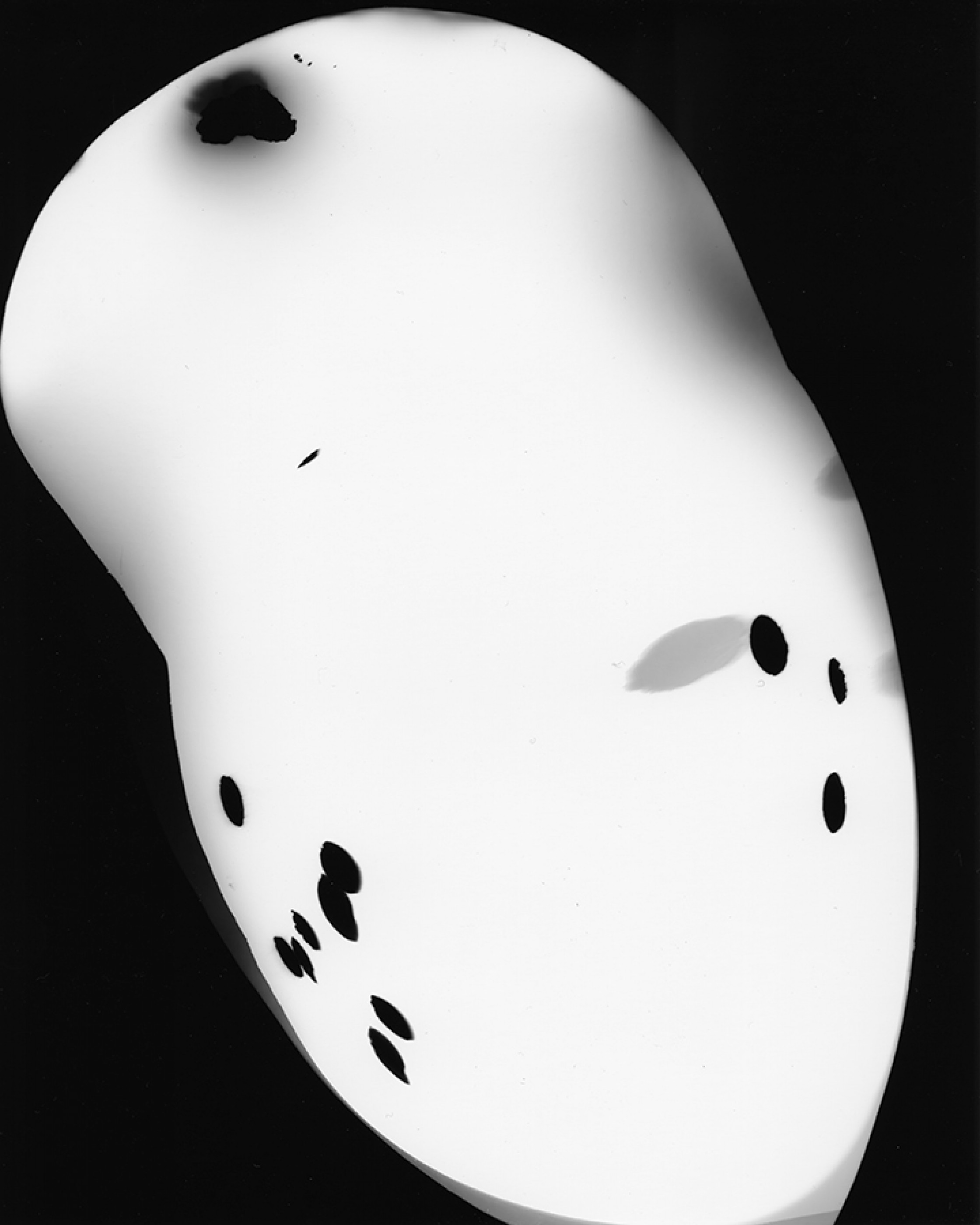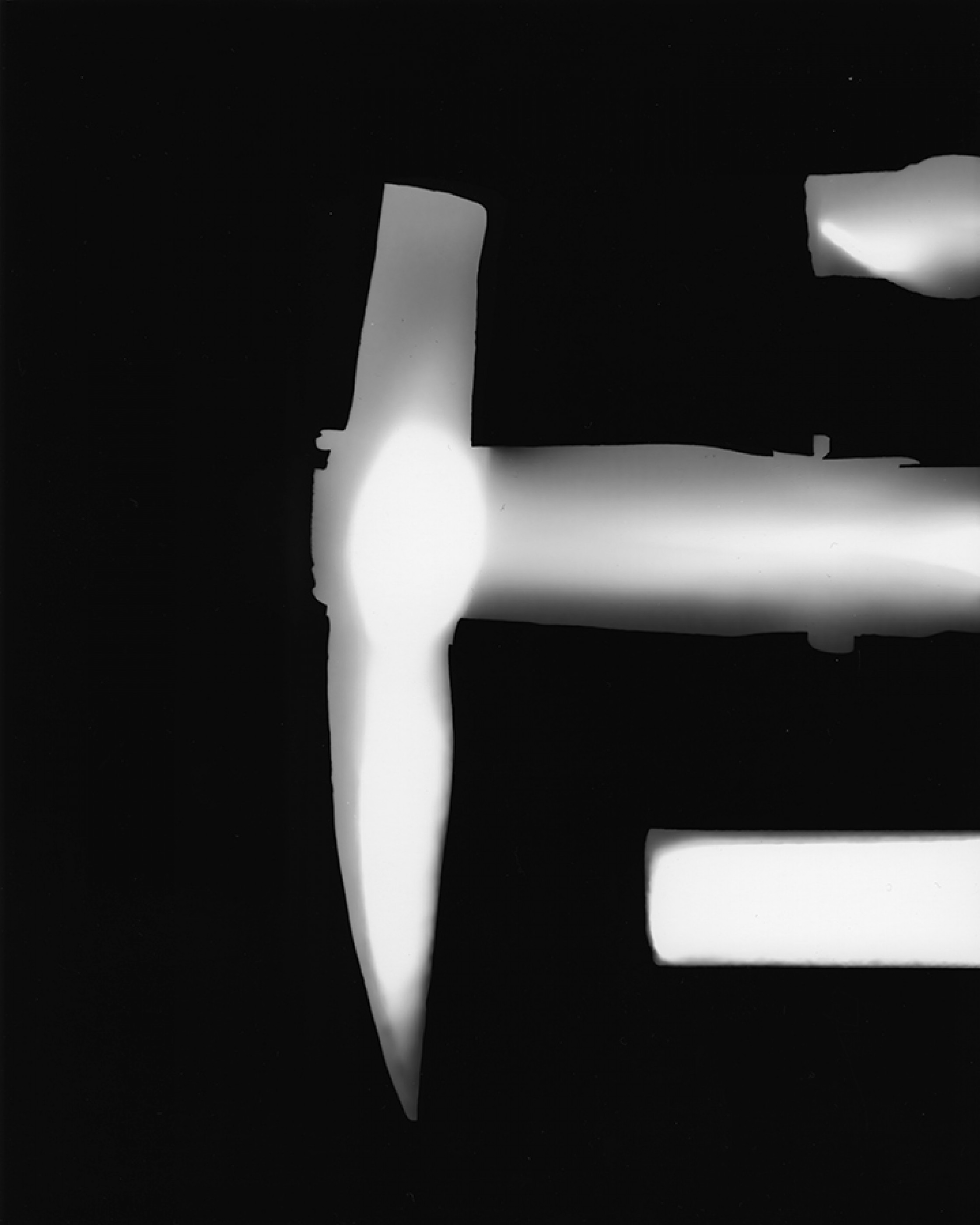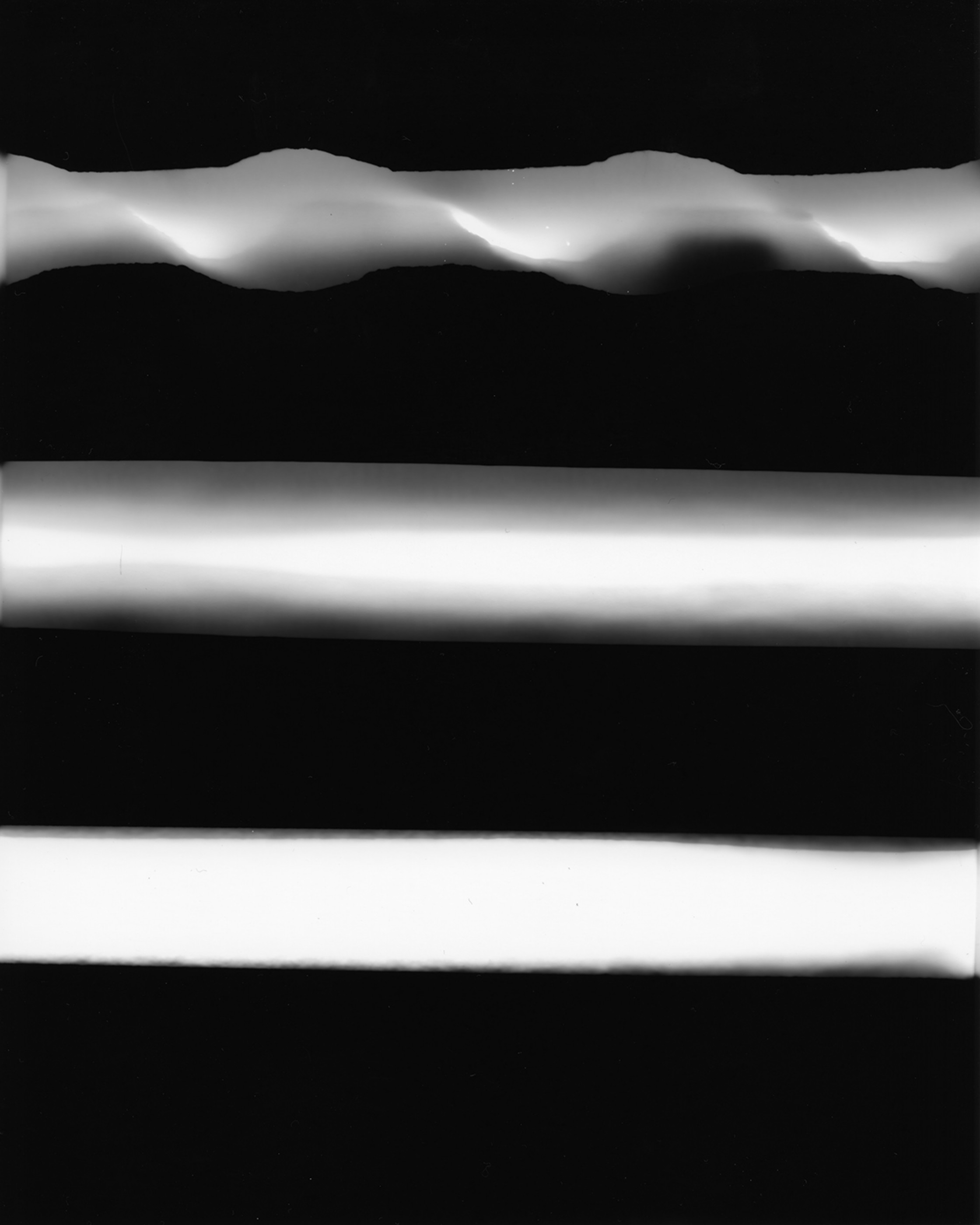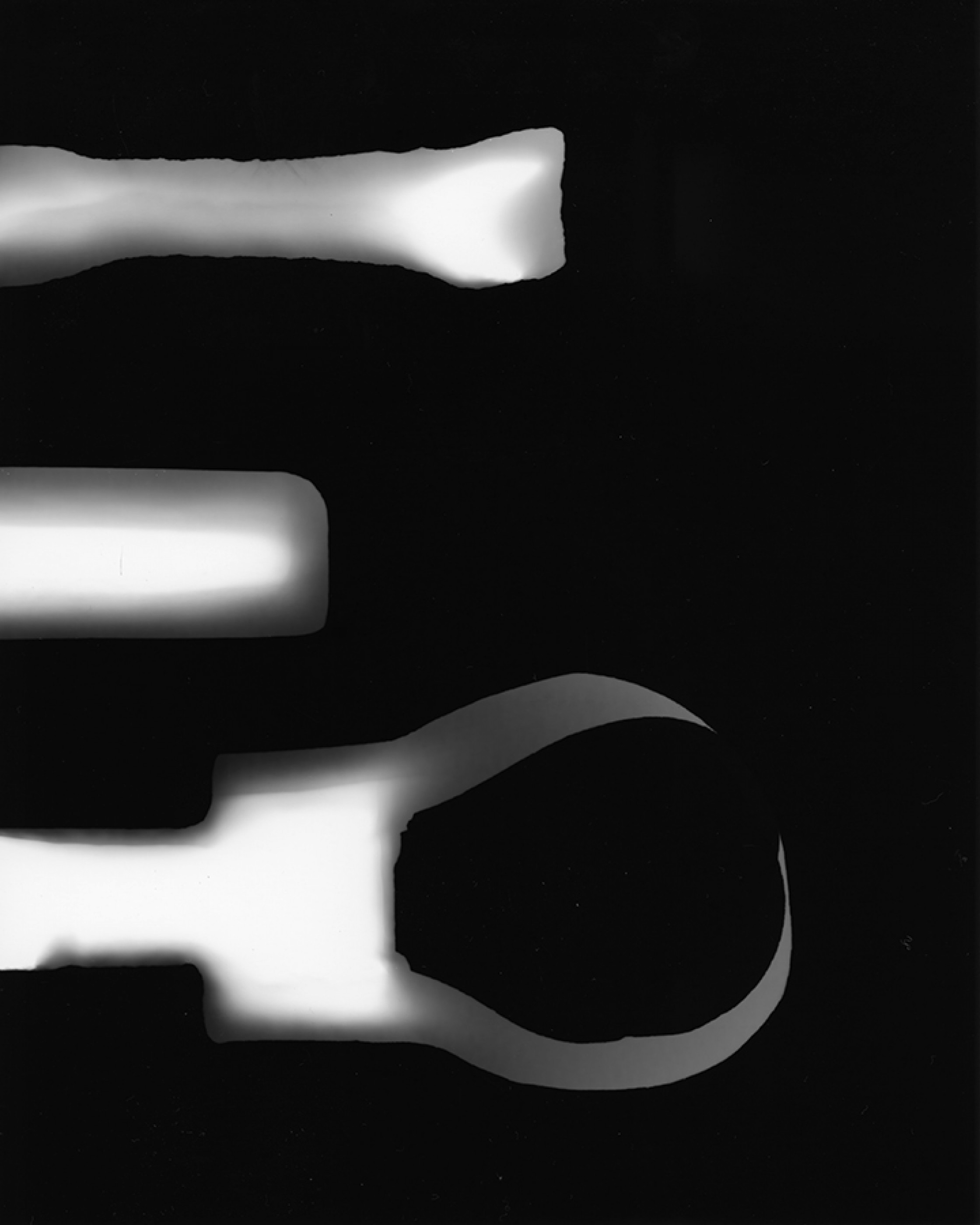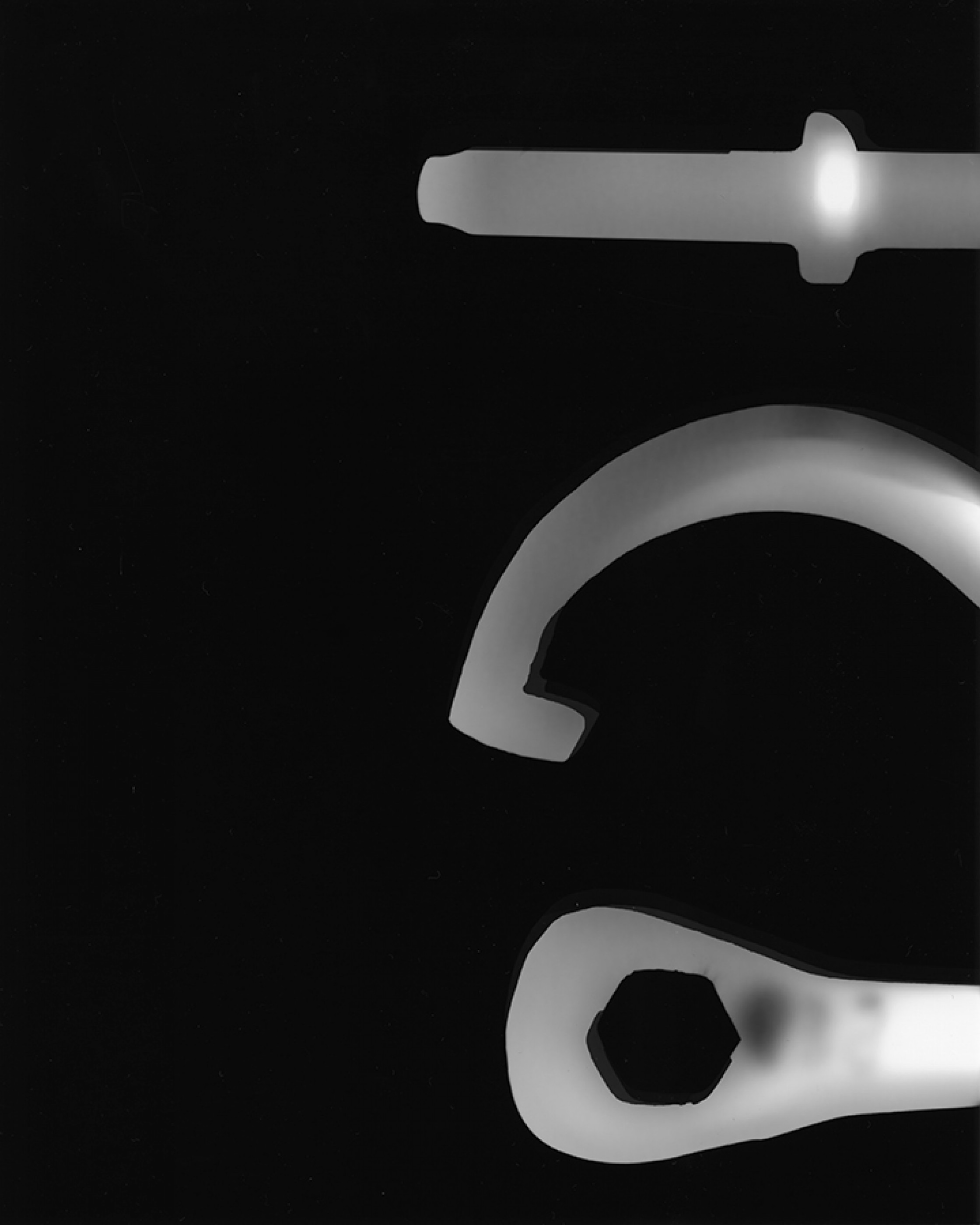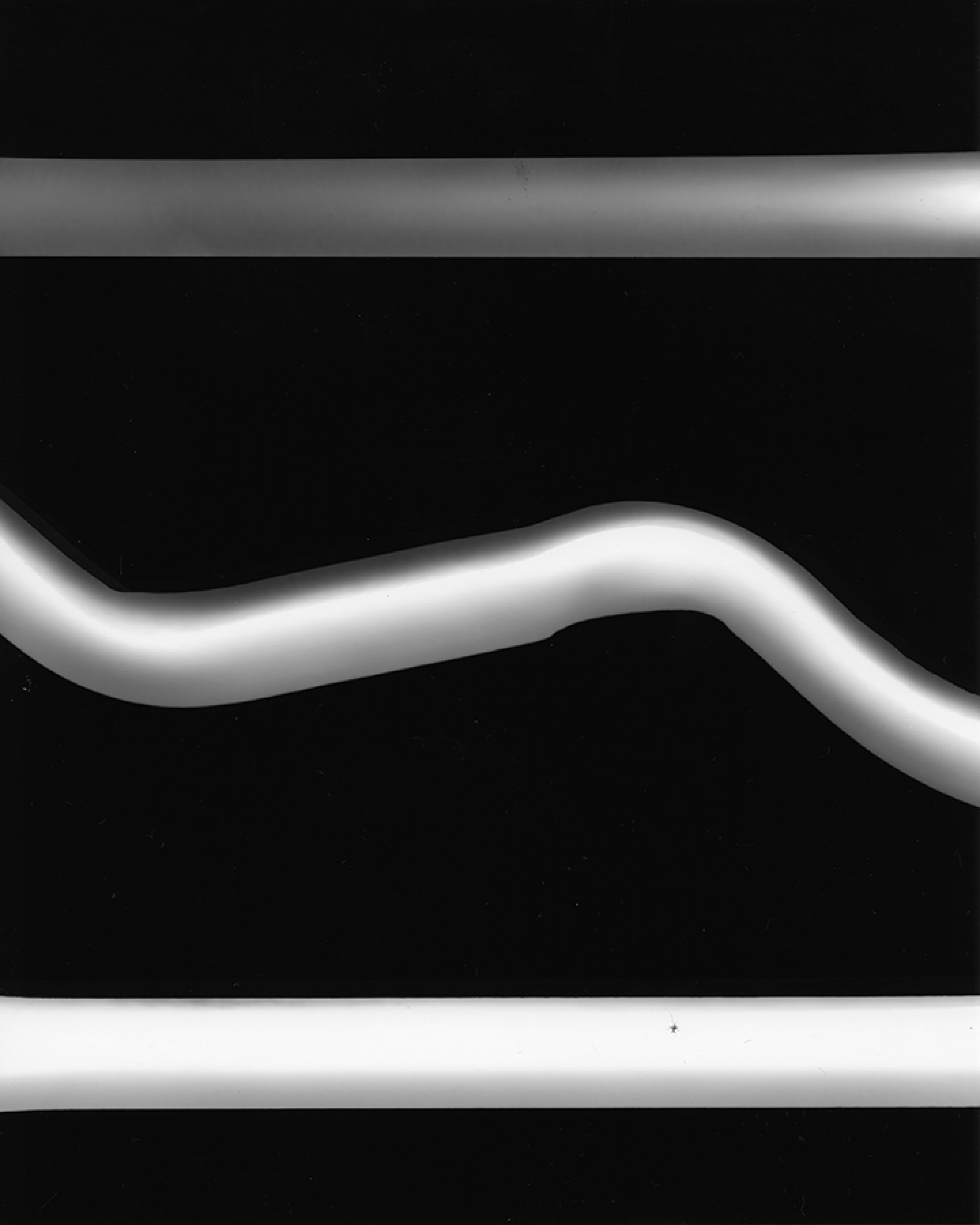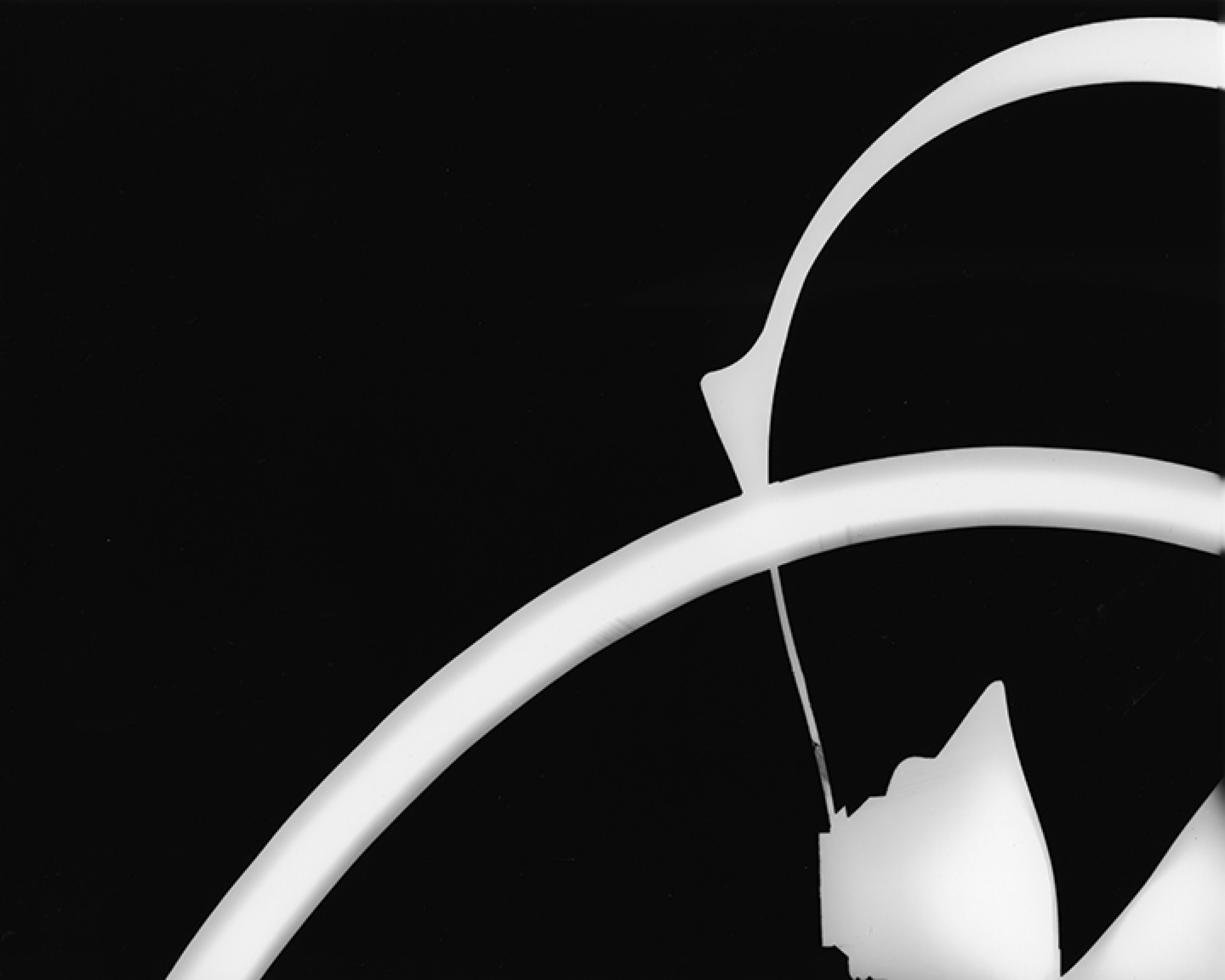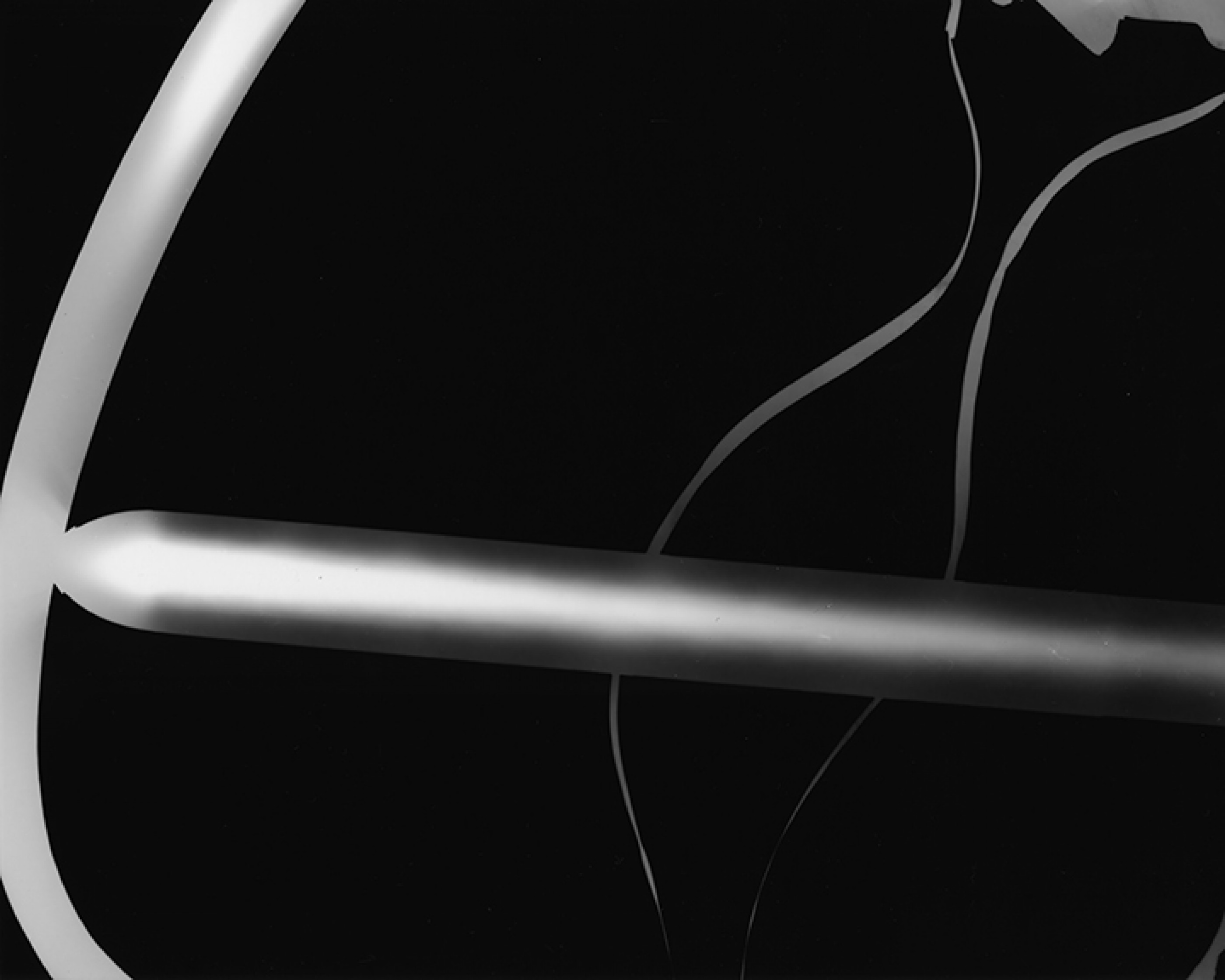Artwork
boot, bottle, Geiger counter
As I write this text, the European Union debates if nuclear power should be certified as “sustainable.” According to a Disneyesque report issued in 2020 by the International Atomic Energy Agency (IAEA), nuclear power delivers “reliable, affordable, and clean energy,” its power and enormous force capable of being mastered and controlled by humanity.1 But have the Chernobyl or Fukushima Daiichi nuclear disasters not proven otherwise? Susanne Kriemann was a teenager when Reactor No. 4 of the Chernobyl Nuclear Power Plant exploded. The incident shaped and politicized her consciousness and ways of conduct. About thirty years later, her artistic practice brought her back to the incident as she sought ways to come to terms with the radical a-visuality of radioactivity by visual means.
In the context of her long-term research on radioactive afterlives she became interested in the pitchblende samples stored in the mineral collection of the Museum für Naturkunde (Museum of Natural History) in Berlin. Some of these “material witnesses”2 originated from the former Wismut SDAG (Sowjetisch-Deutsche Aktiengesellschaft), East Germany’s largest uranium mine, which operated from 1946–90. At its peak, Wismut’s uranium production exceeded 7,000 tonnes per year, was delivered to the Soviet Union for subsequent processing, and helped to facilitate its nuclear armament.
At the time, the Wismut mining company employed about half a million people. Due to the importance of their labor force and the hard working-conditions, the miners were well-paid, profited from various benefits, and received exceptional medical care. The low dose of constant radiation, however, led to invisible diseases such as fatigue and severe exhaustion, and eventually to a high incidence of blood diseases and cancer.
Today, uranium mining takes place elsewhere. The former mining company has become a remediation company of the same name, the mines have been decommissioned, the slagheaps turned into picturesque landscape, and the slow violence of radiation is increasingly forgotten.
Uranium-238 has a half-life of 4.5 billion years. How to imagine, how to cope with a timespan of billions of years? The term “half-life” has a misleading connotation—there is no connection to any human-life-timespan, neither whole nor half. The half-life of uranium seems as unlively as it remains immortal.
Concerned with both the literal and the political invisibility of radioactivity, Susanne Kriemann undertook research and fieldwork. For “Pechblende (Prologue)” she combines archival and scientific images with her own photograms and auto-radiographs, a method that returns to the very beginning of radioactive exploration. She placed a pitchblende specimen about the size of a fist on a pile of photosensitive sheets. Sheltered from sunlight, and without the mediation of a camera or lens apparatus, the pitchblende traced its nuclear signature directly onto the negatives—becoming camera, photographer, and photographed all at once. In her publication P(ech) B(lende)—Library for Radioactive Afterlife these visual recordings are brought together with texts by various authors approaching the subject with a literary eye and through the lens of media theory.
Kriemann produced the series of photograms featured in this image gallery by exposing the basic miner’s equipment with her smartphone’s flashlight: A Geiger counter, a miner’s helmet, a drinking bottle, a rubber boot… The photographic imprints of these worldly objects blur the boundaries of indexicality and abstraction while at the same time re-inserting a human scale into the unstably evolving library of radioactive afterlife.
—Elisabeth Pichler
Footnotes
An episode of the Disneyland television series, called “Our Friend the Atom,” was released in 1957 as part of the publicity campaign for the peaceful use of atomic energy; it describes the benefits of atomic energy, and its educational purpose is consistent with a nature–culture dichotomy as well as a male-dominated worldview. ↑
The artist and researcher Susan Schuppli repurposes the term “material witness” from its use in a legal context to explore the “evidential role of matter as both registering external events and exposing the practices and procedures that enable matter to bear witness.” See: Susan Schuppli, Material Witness (Cambridge: MIT Press, 2020). ↑
